The Rise and Fall of Prince of Persia -Part 3
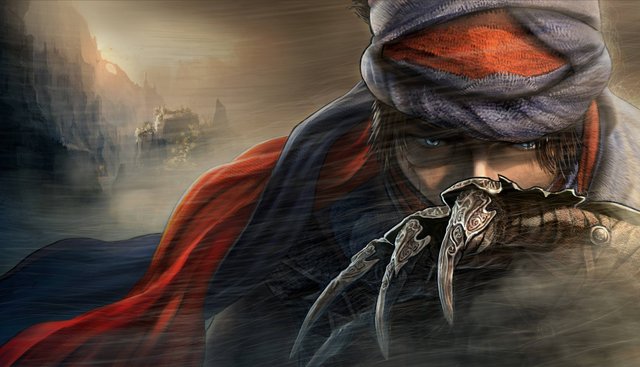
Well, hello there, dear reader! So far in this series of articles I took a look at the entire Prince of Persia series of games, starting with the first one and ending with Battles of Prince of Persia. Today, I will analyze the Modern Era, as I called it and then, it will be all over, at least until Ubisoft decides to release another game in the series.
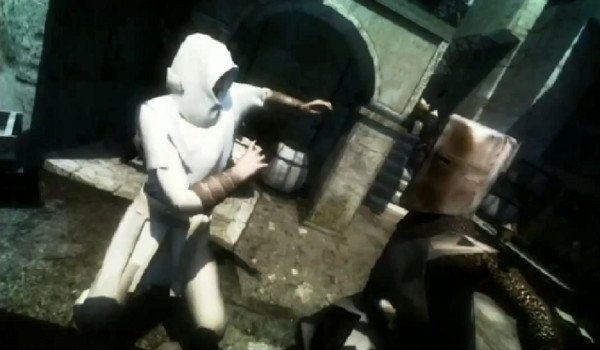
But, before going to the Modern Era, we need to take a look at a scrapped project, and that is Prince of Persia: Assassins. As the title of the project insinuates (and my not so subtle foreshadowing in the paragraph about The Two Thrones ), this is a very early version of what was to become Assassin's Creed. In the story of this unreleased game, you play as a bodyguard for the prince (presumably a different prince), and, at some point, it was implied that it would have cooperative multiplayer.
The Modern Era
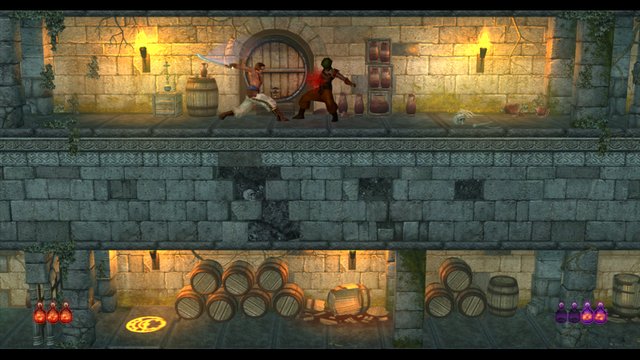
This era starts in 2007, with a remake of the first game in the series, titled Prince of Persia Classic. This project was a joint effort of Ubisoft Sofia and Gameloft, and it injects the art style of the Sands of Time trilogy into the game. This is a solid example of how a remake should look and feel, graphics are good, the gameplay is tighter than ever and the story is still there, not burried under new additions, like other remakes along the years. This game was released on Xbox 360, PlayStation 3, mobile phones, Android and iOS.
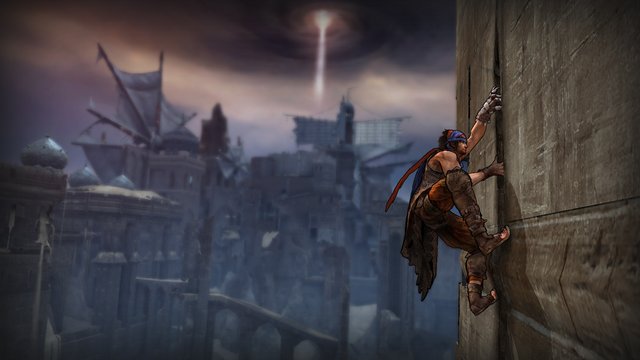
After the success of the first Assassin's Creed in 2007, Ubisoft went on to reboot the Prince of Persia series in 2008, with a game simply named...Prince of Persia...which was not about a prince, but a grave robber. Ok, we are off to a good start, I guess? To add insult to injury, the game starts with our main character shouting the name Farah, which, in this game, is a bloody donkey that we never see. He bumps into Elika, a princess of an unnamed Arabian country, who is hunted by some guards sent by her father. From this random meeting, our guy is dragged into a conflict between Ormazd and Ahriman, the gods of light and dark respectively. The game takes a singleplayer coop approach, meaning that Elika will be you sidekick and she will help with combos while fighting and also with certain acrobatic moves. The relationship between them is tense at first, but they grow protective of each other over time. There is a certain boss fight late in the game in which you need to take a certain drastic decision in gameplay, which contradicts the norms of a normal game and also shows how much they have grown attached one to the other. The art style is a really nice cel shading, which enhances the fairy tale presentation of the game and makes it hold up even today, in 2018. The gameplay is the sticking point now, and oh boy, is it disappointing. It is a heavily simplified version of the Sands of Time parkour system, the jumping button doing most of the work. The combat is a huge flop, not because it is bad, but because it is very, very scarce. You can only fight an enemy at a time and they are all bosses, but the combos you can build with a sword, a metal glove and Elika are really nice looking and feel like they pack a punch. Another difference is the fact that the game is set up as an open world, filled with 1001 collectibles (nice nod, Ubisoft), making it feel like an old school 3D platformer. Our Bonnie and Clyde are up against Ahriman, and in order to beat him they need to bring life back to the game world, by resurrecting the Fertile Grounds strewn about. They fight five lieutenants of Ahriman, the Mourning King, the Warrior, the Hunter, the Alchemist and the Concubine, which are really bland but have interesting fights, so it balances out. The ending of the game is...I have no idea, because only those who bought the game on consoles early on got to play it, because DLC is such a good thing. Full disclosure, I have the game on PlayStation 3 and have no such DLC, so I will never be able to play the game to its end, which is a shame, because the fake ending really intrigued me. The prince sacrifices the world to save Elika, and it is just an amalgam of bitterness and joy, but I still can't forgive that cliffhanger.
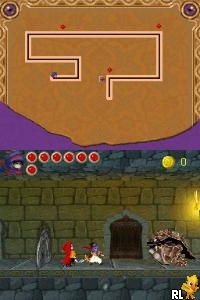
Also in 2008, a Nintendo DS sequel for the main game came out, titled Prince of Persia: The Fallen King. The game begins with the prince and Elika separated, each up to their own machinations to fight against Ahriman. Our graverobbing hero leaves for The City of New Dawn due to his affinity with the powers of Ormazd, hoping to be able to summon the god of light. He meets a new ally, called Zal, who helps him cleanse the city of corruption to stop Ahriman's growth in power. Ultimately, Zal and the prince fuse into one being and fight a beast form of the king of the city. Zal is freed from corruption after the defeat of this monster, but dies. The city is freed from the god of darkness's grasp and a reoccurring character, called the Ancestor, ends the game with a cliffhanger, telling the prince that, in time, he will gain new powers and meet a new ally (cliffhangers seem to be trendy in this rebooted series).
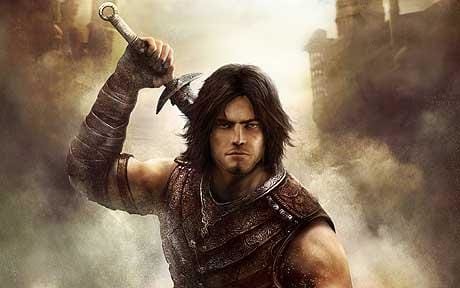
In 2010, Ubisoft launched Prince of Persia: The Forgotten Sands, which has a different story, depending on which platform you play the game. These games are movie tie-ins with the Disney film Prince of Persia: The Sands of Time, which hits a few points of the game with the same name...from 2003. Neat. Anyway, all of the The Forgotten Sands games follow the classic gameplay from The Sands of Time trilogy, wall running, time rewind and all that.
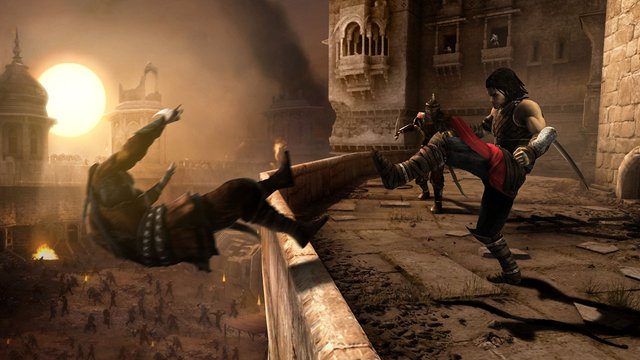
The version released on PlayStation 3, Xbox 360 and PC follows the prince being sent to the kingdom of his older brother, Malik, but finds it under siege. They seem to be close and equally snarky, but retconning a brother into the timeline feels shoehorned in. Anyway, Malik is losing the battle and unleashes an ancient evil, more exaclty a djinn by the name of Ratash, who kills people indiscriminately and possesses him. The prince is now forced to race after him through the imperial palace, with the help of Razia, another djinn. During the game, the prince unlocks four powers, based on the version of the sands available in this game, like the classic rewind, which has a new twist, being able to also rewind delapidated portions of the environment without turning back time, the ability to freeze water, for some reason and an air dash towards enemies. These are complemented by a new set of combat abilities, like a stone armor, a wind knockback, a fire trail and an ice wave. The funny thing is, there is no block in combat. Only dodges. But now you can jump on enemies and kick them, so it's something. Almost forgot to mention: there is also no option to slow down time. Back to the story:our hero is sent by Razia to get a magic sword from the forgotten (get it?) djinn city of Rakem. After bringing the sword back to her, she sacrifices herself and infuses her spirit with the sword to make a weapon that can potentially kill Ratash. After this task, the prince manages to eventually catch up to the evil djinn, whom he battles multiple times, and in the end he finishes the job, killing his brother in the process. The post-battle cutscene is a series of images with narration which tell us that the prince returned to Rakem to return the sword in Razia's memory and then went back to king Sharaman, his father, and explained what happened. All's well that ends well, but wasn't this game supposed to fill the blank between The Sands of Time and Warrior Within? Where is the bloody Dahaka?
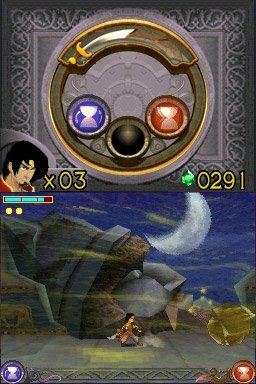
The Nintendo DS version is weird, because it takes place AFTER The Two Thrones (oh, for fuck's sake, it had an ending). In this game, the prince, a master of combat and acrobatics, is somehow kidnapped by a cult and brought into India along the Razia sword mentioned earlier (so they wanted to make The Forgotten Sands the mised episodes, in a way). This cult uses the prince's blood and Razia's powers to conduct a ritual which, shockingly, unleashes an ancient evil and erases our main character's memory and also leaving the djinn without power. The force of this evil collapses the temple in which they were used for the ritual and both of our protagonists fall into a pit. After escaping, they embark on a quest across India (oh, so it is not in a Persian kingdom. Cool) to kill the three cultists who set up the ritual, who are now grotesque sand creatures possessing djinn time manipulation powers. After this ordeal, Razia has her powers and the prince his memories. They chase after the resurrected leader of he cultists, who just conveniently started his quest for world dominance by attacking Babylon. Of course, they manage to kill him, but at the cost of Razia's life. The prince throws the sword from the peak of a tower in Babylon and the sword dissapears before reaching the ground.
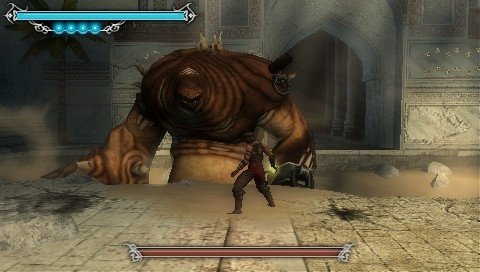
The PlayStation Portable version of the game starts with a prophecy of an evil fire spirit by the name of Ahihud, who rules over the game's world and only one of royal blood can kill him, so, of course, he sends his minions to kill all royalty. Of course, the prince escapes from his father protection at home and follows a mysterious light , which turns out to be a Sister of Time by the name of the Helem. They embark on a quest to free the other sisters and end the reign of Ahihud. This spirit intends to devour the mystical energy of the world, called Elixir. The story goes how you would think it would, meaning that the prince frees Helem's sisters and defeats Ahihud in a not so epic final boss fight (it is a game made for a portable system in 2010, so of course it feels a bit barebones).
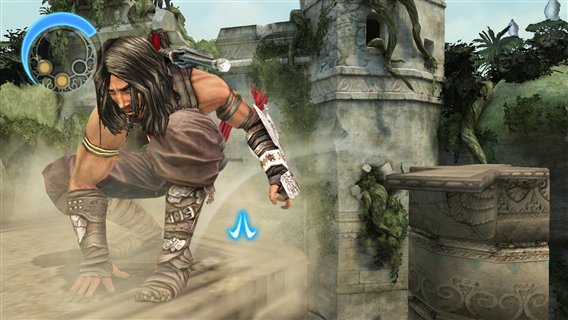
The Wii version (almost always forget about the poor Wii) starts with the prince out at the market one day, buying a genie by the name of Zahra. She promises to give him a kingdom (so, this is before Warrior Within, because by the beginning of that game he couldn't care less about such things) in exchange for helping her. By the means of an enchanted statue in a clearing they are transported to a kingdom named Izdihar. The place is deserted and filled to the brim with poisoned vines. Our hero sees a sword in a stone (pretty on the nose symbolism) and pulls it out, freeing a Sorceress who flees the scene. Suddenly, a monster arrives, and while fighting it, the prince manages to lodge the blade into it and break the sword. Zahra explains to the prince that by pulling the sword out, he unleashed evil plants called Haoma and that only by reforging the sword can they stop them. Apparently, Zahra is the only survivor of the Haoma infestation and has vowed revenge. Her plan was to find someone worthy and allowing that person to buy her at a market. They reach the monster with the blade still lodged into its body. They defeat it and it turns out it was the king of Izdihar who was cursed by the plants. He tells the prince with his dying breath to save his daughter, Nasreeen. The sword is whole again at this point and they chase after the Sorceress and kill her, revealing Nasreen. The prince kisses her to transfer his and Zahra's power to save her life, making her immortal. Izdihar starts to crumble, and the prince tries to get away from the avalanche of stones. The genie sacrifices herself to save the prince and tells him to remember her and Izdihar. Our protagonist waskes up near the place of the statue, which is now shattered, leaving no way to return to the decadent kingdom. This game also features a port of the original 1989 game, which is always a plus.
So, that was it, the Prince of Persia was series went on to be a part of history instead of continuing to grow, but there are some really solid games (and also some weak ones, but who cares) you just need to play to understand and appreciate their blend of story and gameplay. Assassin's Creed went on to replace this game on Ubisoft's delicacy intellectual property plate, making millions upon millions of dollars, burying this older franchise into a sandy grave.
Links to the other parts of this retrospective:
-Part 1: The Original Trilogy
-Part 2: The Renaisscance
Sources: the cover image comes from wallpapercave.com, the Prince of Persia: Assassins image comes from pause.es, the Prince of Persia Classic image comes from realmofgaming.com, the Prince of Persia (2008) image comes from shacknews.com, the Prince of Persia: The Fallen King comes from emuparadise.me, the Prince of Persia: The Forgotten Sands image comes from telegraph.co.uk, the PC/PS3/X360 version image comes from mobygames.com, the DS version image comes from amazon.com, the PSP version image comes from mobygames.com, the Wii version image comes from gameinformer.com.
Nice work. I've read all 3 parts and I had lost touch with this series, now I know what I have to play and what I have to avoid. Thanks!
Glad to be of service!
I enjoyed the 3 posts about the King of Persia. It's a very interesting story and I like that you've provided a lot of details. I wish you a productive week.
Thank you very much and I wish you'll also have a great week!
@originalworks
The @OriginalWorks bot has determined this post by @vladalexan to be original material and upvoted it!
To call @OriginalWorks, simply reply to any post with @originalworks or !originalworks in your message!